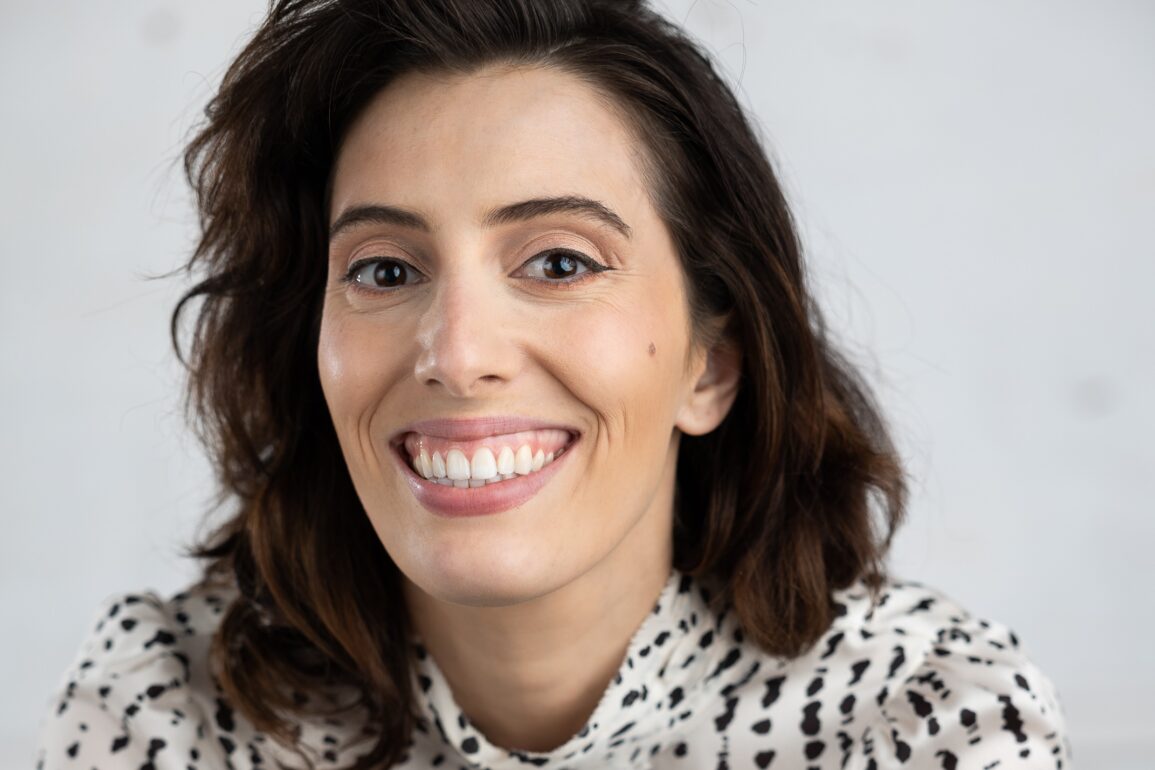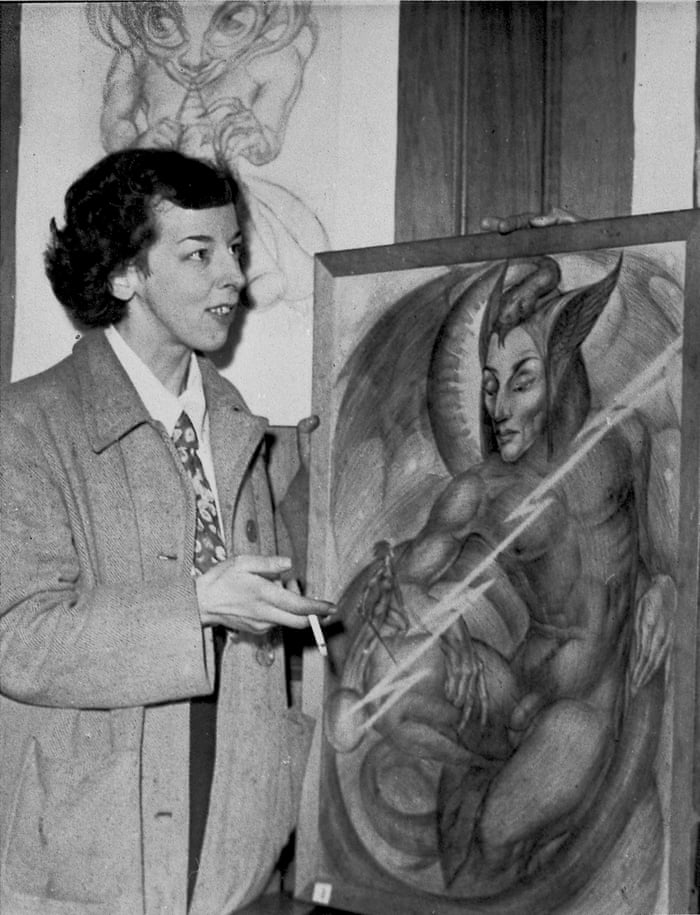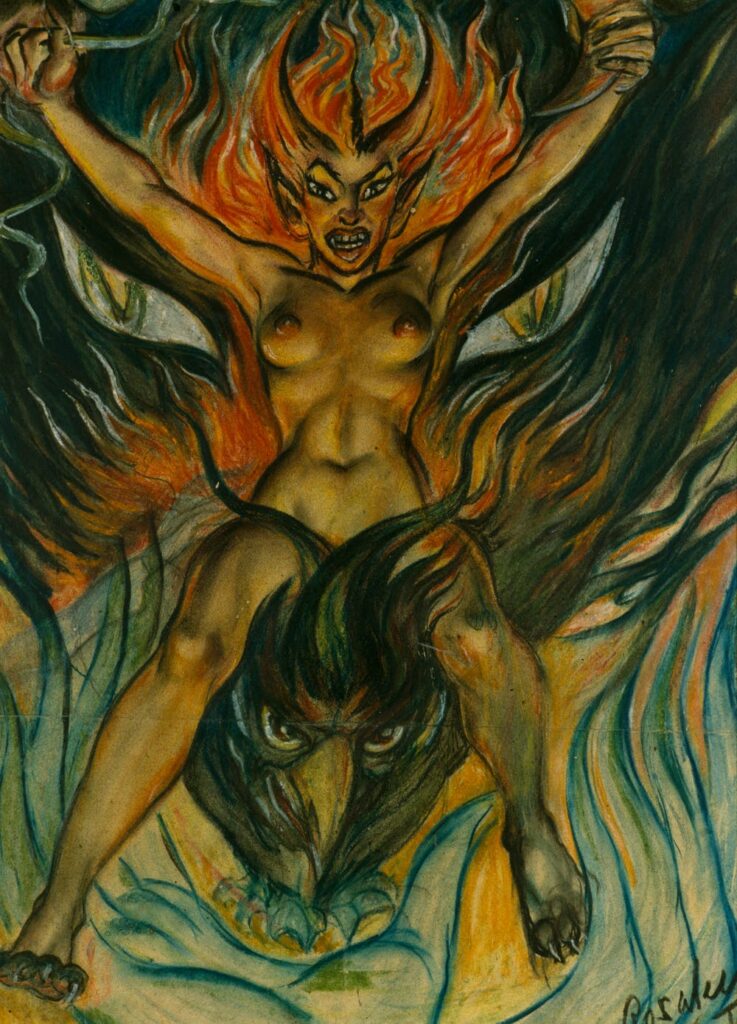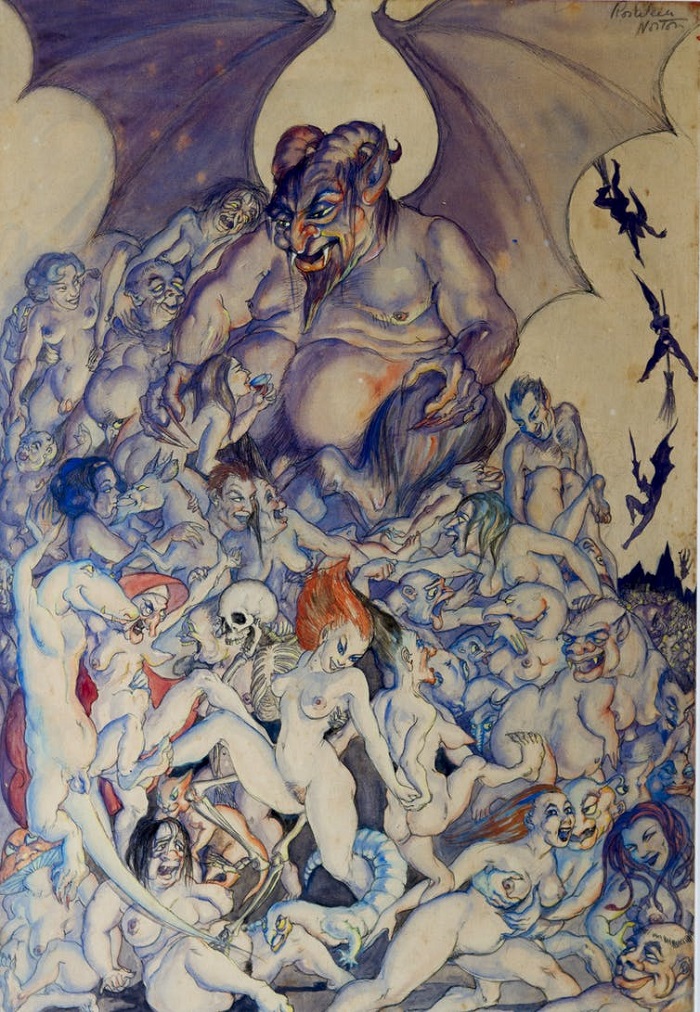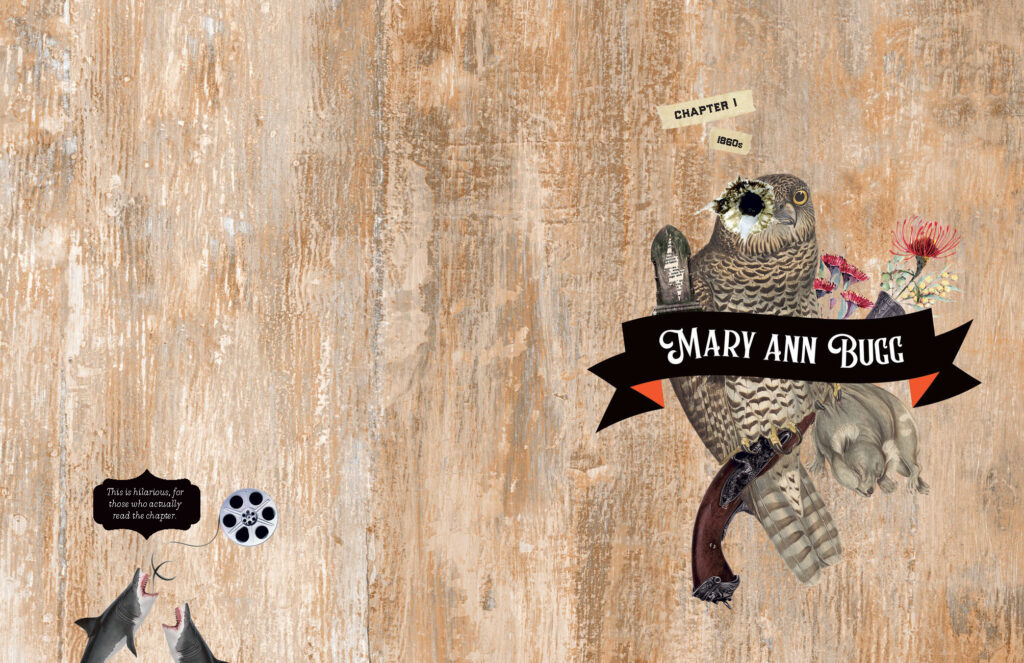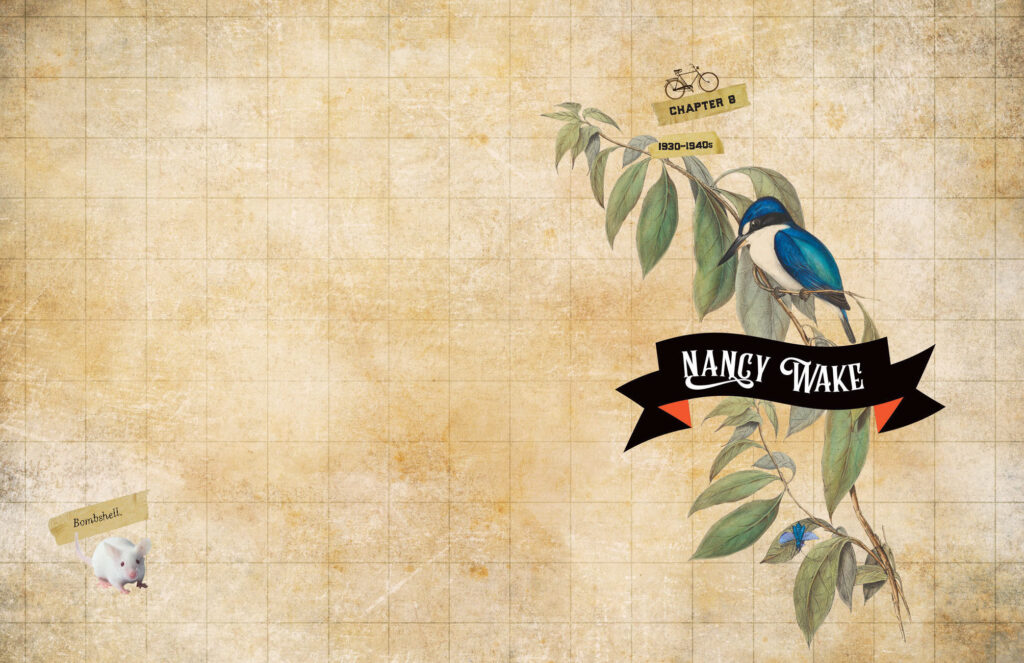Back in 2018, an utterly joyous and entertaining webseries emerged into the world called Sheilas. Sisters Eliza and Hannah Reilly together unearthed the forgotten stories of the badass women of Australian history, bringing to life the tales of bushranger Mary Ann Bugg, the Nazi-destroying Nancy Wake, and jumping in the water with Fanny Durack, plus more.
On February 22nd 2022, Eliza Reilly unleashes the masterfully hilarious and downright essential book, Sheilas, into the world, extending the webseries into a new realm and bringing more stories about iconic badass sheroes in Australian history.
In this interview, Eliza talks about the work of Rosaleen Norton, why there needs to be more films about Mary Ann Bugg than Ned Kelly, and Constitution changing legend Faith Bandler, all the while exploring what it means to ride sidesaddle, and more.
If this interview and the excerpts included have you excited for Sheilas, then make sure to pick up a copy from Booktopia (signed copies available while stocks last!), or visit Pan Macmillan Australia for further details.
A copy of Sheilas was provided by Pan Macmillan Australia for the purpose of this interview.
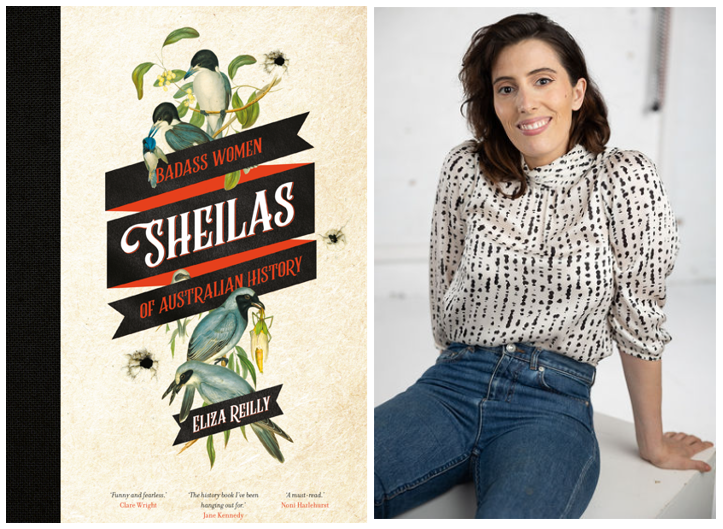
I loved the web series, I thought it was fantastic. I remember when it dropped, thinking firstly, ‘oh my gosh, these are people we didn’t know about’. Secondly, this is funny, and very entertaining, and visually exciting to look at. And thirdly is this is filling a niche area that we need in Australian history. Looking at Australian film and TV, it’s all focused around dudes, and bush ranges, and the male parts of history, and there’s so much more than that. Where was the impetus to get started on doing a web series?
The web series originally was a part of Screen Australia‘s amazing initiative called Gender Matters. Essentially, that was asking for stories where there was a female protagonist, female stories with female crew, female storytellers telling female stories. Me and my sister Hannah, who did the web series with me, we had already sort of developed Sheilas, and it felt like it was a really perfect fit with that Screen Australia grant. And that’s how it got made. It was just a really fun experience. And it was really fun being able to bring these stories to life, especially on a web series, which I felt like was a perfect medium for the first iteration of it, and it gave Hannah, myself, and the team so much playing room because essentially, when it’s a web series, you are your own broadcaster, and so you get to decide how the world sees it and when.
You also get to see some really fun stuff. You get to see the metrics, and you get to actually have a really cool one-on-one conversation with your audience in a way that is also there in traditional broadcast, but you’re not getting it as live and as tangible (as a web series). And I’ve built so many amazing relationships with people who were fans of the web series, and we can chat on Instagram. It’s so fun. I love that part of it.
There’s that direct connection to everybody, which is really cool. I think that’s the thing that people who make web series or shows for the web don’t really think about when they’re actually in the production, which is the metrics of being able to know who is watching it, where they’re watching it, all this kind of stuff. Because, it can be great to be on a streamer, but I’ve spoken to some of the people who have had films released on streaming services, and they get put on there, and then they get buried, and you don’t know what your audience reach is. And that makes it hard to know who you’re delivering your next project to. With those metrics in your head, did that help you realise, ‘alright, there is an appetite for this, and I can translate it into a book’?
Yeah, absolutely. And especially because there were a few people on my Facebook group that would private message my fan page and be like, ‘when’s the next Sheilas?’. And it was so hard for me not to be able to say (about the book). I couldn’t talk about the book yet, so I’d say ‘don’t worry, there’s more coming’. So that that was so nice.
And also, the good thing about a book is that it can be budget flexible, it doesn’t need a budget, we can go wherever we want, because the thing about film, it is wonderful, but there were so many problems that we needed to solve (in regards to) these women went on the most amazing adventures, and that’s very expensive to to put on screen, it’s expensive to put plane crashes and fights and World War Two (on screen), but in this book, I really could tell them everything without feeling like I was gonna blow my budget, like on film and TV. So this has so much adventure and action. That was so fun to write.
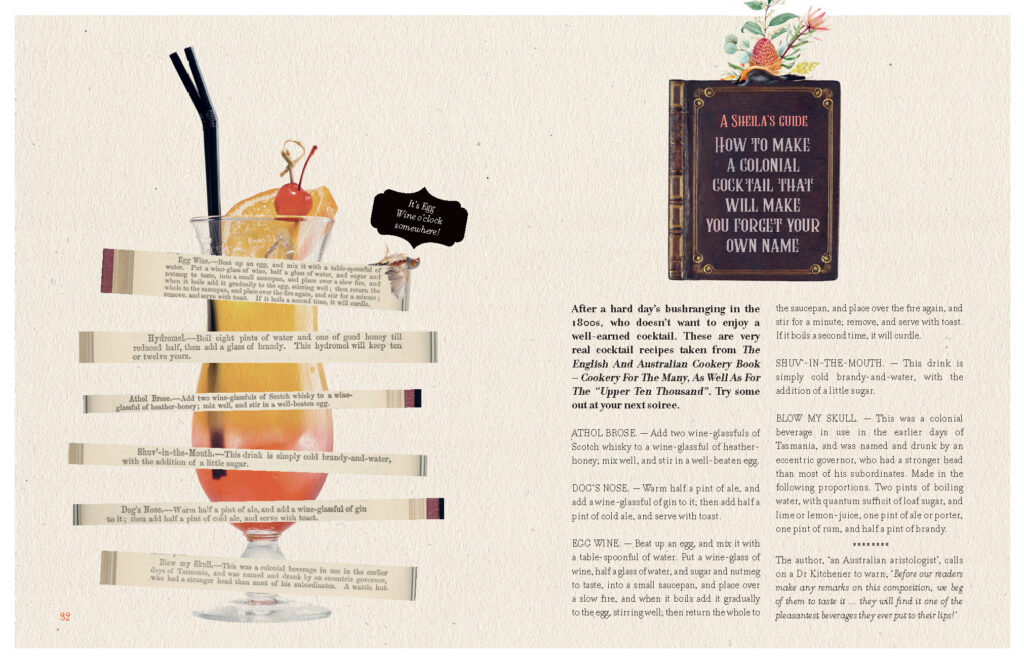
Gender Matters has been so brilliant in getting great stories out there, I’ve spoken to so many filmmakers and producers and actors who have said, ‘I wouldn’t have been able to tell this story if it wasn’t for Gender Matters’. So it’s great to be able to hear that Sheila’s came into existence because of that too. Because these stories need to be told, they need to exist.
They do need to exist and also for me, it’s not so much like a philanthropic gesture. It’s also like these are just great stories, everyone’s a fool if they’re leaving it dusty and in a corner. So going over and blowing the dust off these amazing stories, it really feels like I’ve struck gold. It doesn’t feel like I’m doing charity. It feels like that these are just really amazing stories that have been pushed to the side because of a gender bias.
Let’s start talking about some of the people that are in here. First of all, I want to talk about Rosaleen Norton. There’s a great documentary made about Rosaleen, The Witch of Kings Cross (directed by Sonia Bible), which is fantastic if people haven’t seen it. I was familiar with her work, and then seeing that film and reading about her in this book as well was exciting. Her push against the life that she was forced to live in that period of time is fascinating. What excited you about Rosalie and what made you decide to explore her life here?
Well, actually, I was asking my therapist, ‘do you know any bad arse women of Australian history?’ And, he got really dark, and he was like, ‘oh, you must talk about the witch’. And I was like, ‘what?’ I had never heard of Rosaleen, and he was super excited, and said, ‘oh, you’ve got to go see her’. So I ran home-after I gave him too much of my money-I ran home and Googled her. And she was such a badass. She’s amazing.
And just thinking that she was the only Australian artist whose work has been literally burned by the order of the Crown, she’s the most persecuted artist in our history. And she just lived out loud. I really genuinely feel like she would be such a fun girl to go have a cocktail with. She identified as a bisexual back in the 1940s, which is wild. And she was just – in the most respectful way – such a weirdo, and she just really owned that.
I think that’s what was so scary and threatening about her is that she knew that she was an outsider. And she loved that about herself. She loved that. And that’s so scary for police. And that’s scary for the system. But she lived and worked under that. And she was just drawing nudie weird, Dungeons and Dragons pictures. And they were up in arms! They were so upset about it.
I love her artwork. I love her eyebrows. We can’t really talk about Rosaleen without talking about her eyebrows. I love it. I love the way that you’ve got her framed in the gold frame too. These figures in history need to be celebrated, and that’s one of the things which I really love about this is how you managed to present them in a way that, they may not be in a museum, they may not be in an art gallery right now, or having their own museum celebration, but you’re giving them their own art gallery, their own presentation in this book. And that’s what I love about the gold frames, the presentation, it’s all there. It’s tangible and it gets us to celebrate them even more.
She’s amazing and she lived (in) Kings Cross, (which) is not too far away from where I live and when I go there now I always think about her walking through the streets with her earrings made of bat feet and just having orgies and having like fabulous sex positive kinky parties. She’s such a badass. Her art was beautiful. Being a witch or being in a coven for girls my age is a thing that we talk about. There’s been this sort of cultural resurgence of ‘you want to have witchy energy’ (which) we’ll say to each other, and I wish Rosaleen was here today to see what was going on because she would just be having the time of her life. Not that that stopped her nearly 100 years ago.
She was really pushing the boundaries of everything back then. So many of these women (in the book) really are. This is a celebration of people who have grabbed the roof (of the patriarchy), and they’ve shaken it and said, ‘no, fuck this, I don’t need this anymore’. Not only were these women who were doing the best that they could to really shake everything up in their time, in times, where as you’re saying, in the 1940s, being an open bisexual is very hard. And putting the artwork that Rosaleen was doing out there, would have been really hard.
Let’s move on to talking about Mary Ann Bugg, her who was a bush ranger in a time which just really would have been very difficult to do. And this is the thing which I find so frustrating, if we look at American history, and you can look at all of the great women who were on the frontier over there (Calamity Jane), and they’re celebrated in history. And then we look at Australian history, and we have a whole group of women Bushrangers been pushed down.
I know. And meanwhile, there’s been 11 films about Ned Kelly.
Yeah, why? Let’s put a moratorium on them.
I don’t know! The big point that I’m trying to make is that, like, I don’t want Ned Kelly to have less movies. He can have 11 movies, he can have 120 movies. I’m not about taking away from the boys. I’m just about showing more. We talk about that in the web series, and in the book, ‘well, if you love bushrangers, there’s Mary Ann Bugg, there’s Jessie Hickman’, who’s another female Australian bushranger, who will probably be in the next Sheila’s book. I can’t wait to write about her.
It’s just about being like, ‘Australia, if you love bushrangers, there’s so much bushranger stuff that you haven’t heard, and you obviously have an appetite for it, you love Ned Kelly so much’. I don’t know why there’s so many Ned Kelly’s, he’s like our Spider-Man. There’s always gonna be another fucking Spider-Man.
Mary Ann was almost lost to time. And she crawled her way back through the amazing work that librarians and historians and archivists have done to put together her story. So I feel like she’s really been resurrected. And we’re not letting her be lost.
That’s a really good way of segueing into talking about the archival aspects. There was a documentary which came out at festivals last year, called Ablaze (directed by Tiriki Onus and Alec Morgan), which is about Bill Onus, and his grandson, Tiriki Onus, who is an Aboriginal opera singer. Bill Onus was one of Australia’s first Aboriginal filmmakers. And I had no idea that he existed, just like a lot of people had no idea that he existed…
…right now I’m learning about him. You’re telling me about him right now.
…and this is the thing, it’s like his existence has been smothered by the fact that he was an Aboriginal filmmaker. And it’s like history has said, ‘let’s just get rid of his films, and we don’t need to talk about them’. And they weren’t doing anything majorly subversive (by todays standard), he was just telling the story of Aboriginal life on film. And yet, because of the white dominance and the patriarchy, it’s been pushed down.
And it’s like talking about the women who are in this book. I’d mentioned to people, ‘hey, I’m going to be talking to Eliza about Sheilas, and she talks about Mary Ann Bugg’, and they’re like, ‘who’s that?’ This is a brilliant point to be able to go, ok, this is an icon in Australian history that we need to talk about more, here is a book to learn about them. How did you manage to find all this information out when the archives are so smothered?
I really stood on the shoulders of giants. There are great historians who have done research essays and so just reading at a lot. Also understanding that Mary Ann Bugg’s name, literally her name had, like a lot of names back in the 1880s, there was a lot of variety of the way that she was referenced. And so once I understood that she was referenced in a whole bunch of different ways, some incredibly racist, and some were just incompetent journalism of the 1800s, just misspelling mistakes, once I got that I would search for all the different ways you could spell the name Mary Ann Bugg, and also her boyfriend, Captain Thunderbolt, who was a bushranger.
I read so many editions of strange newspapers from the 1880s, I can’t even tell you Andrew. Once you find the piece of information, to prove that she was in the area at that time, the high that you get when you have been painstakingly going through and trying to find her, and then when you find her in the pages of some obscure New South Wales, Gloucester paper, it is just the buzz, the high that you get is, is just so amazing. And that really spurred me on to be like, ‘you’ve got to go look for her’, because it’s only you and a handful of really clever researchers that know about her.
The pressure was on.
The pressure is on. And it’s there, it’s in the text, which makes it really exciting to be able to read about these people. Faith Bandler as well, to swerve to talking about her, I didn’t know that she existed. It’s this ignorance and this dominance of white culture or history. Talking about Ned Kelly, I remember in high school, we spent weeks talking about Burke and Wills, and now it’s like, do I need to know that much about these guys that just kind of wandered off and disappeared? Like, how much have they actually influenced my life? Not a heck of a lot, you know? Whereas people like Faith, people like Rosaleen, these are people who have actually had some kind of tangible impact on my life and then finding out about them, I’ve been able to see how this is how this has taken place, and this is how this has influenced me, and while I didn’t know that these people existed, and I’m grateful that I know they exist now.
I guess it’s a funny feeling. Isn’t it?
It is, yeah.
Especially because she was alive until quite recently. And I do talk about that in the book being like, ‘if you don’t know about her, that’s okay, I didn’t know, either. And that is that’s not the point, don’t worry about it. Let’s go on together and learn about her together.’ Because, there is that guilt of ‘oh my gosh, I didn’t know about you’. And, I feel like if you’re too young, or if the Constitution wasn’t the most interesting thing to you when you were young, or even as an adult, which, for a lot of people, it’s a big snoozefest, the challenge was, how do you acknowledge that the Constitution is such a dry topic, but then also understand that Faith did something super exciting, even though it was just on paper at the end of the day, but there was so much action that drove her story.
ASIO was stalking her for so long. And I’ve got a photo in the book, which I had found her actual ASIO file. I found it really close to publishing date, and I was like, ‘can we please put this photo of her file in?’ You can go and read her whole ASIO file that the agents had on her when they were following her undercover and taking videos of her. She was one of the first subjects of like that they were taking videos of persons of interest.
And she just has this cheer, this joy and this cheer, like she’s cheerily changing the constitution. It’s kind of no wonder they were really, really threatened her because she was such a delight. Her superpower as a Sheila was that she was like, a girls girl. Everyone loved her. There’s a lot of Sheilas in this book where people are like, ‘oh’, like Rosaleen led quite a individual life alone. She was alone for a lot of her life. And she passed away alone. But Faith was such a mover of people, and she really had a way that everyone would just follow her to the ends of the earth. And I feel like that’s her superpower as a Sheila. To be a Sheila, that’s also a part of it. You don’t have to be disliked by everyone to be a Sheila.
One of the things I love about this, is that interspersed in between the stories of the women is the ‘Sheilas guide’ to things. Specifically I’m looking at ‘how to ride sidesaddle’, reading through that colours in how society operated at a certain period of time. What was the joy of you in discovering those kinds of things and deciding what to actually include in those sections?
Well, ‘how to ride sidesaddle’ was actually the first thing that I wrote of the entire book. The heroine story is an important story to tell, but then also in that, there’s so many historical tidbits that are equal parts hilarious, looking back on them, but also really eerie, and give that funny feeling down your spine.


Like, sidesaddle seems like a really cute antiquated idea that if you actually unfurl the ideas behind riding sidesaddle, it’s quite incidental. I want to do more of those in the future as well, like history of the bra or history of the tampon. There’s so much of the story behind behaviours and how they’re set in place, but also, sometimes I think it’s really hard when you’re speaking about, say, gaps in either gender or race or socioeconomic status, like it’s really hard to understand the gap because of the way that it’s been designed to be like an illusion. This idea that say, like in the 1880s, if people only saw women riding sidesaddle, they wouldn’t know that women could ride any other way, because that’s all they’d seen. And women themselves didn’t know they could ride that way. Because that’s all they’ve been taught.
And it’s this cyclical cycle of society and culture defining behaviours, and therefore those behaviours define society and culture. And there’s this tradeoff between the two. It’s so interesting when we’re talking about like sidesaddle. But it’s also so important, it was about how a girl got around. I think that was kind of interesting, and there was so much in that chapter that I didn’t know. But I just sort of was like, ‘oh, why was that a thing? Is it more than it seems?’ And it totally is, I think.
The obvious question, and we have discussed and explored this already, but I would love to get this in your own words, how important is it to have these stories available to people and to be able to actually bring them back into the public consciousness? Because, as we’ve discussed, they’re been hidden for so long.
I think the women in the book would do what they do, regardless of their story being told, which I think is why they’re so amazing. But for me, the Sheilas that I write about in this book are really important because they represent everything you need to be the kind of woman that you want to be in the world.
You need tenacity. You need this bravery. You need creativity and imagination.
And I just wanted to give more people these stories, because when I think of Australian brave people, Ned Kelly comes to mind, that Prime Minister that does shoeys at the cricket, like these are the sort of people that come into my mind. But I wanted to give women and men stories (for) when you’re right outside your boss’s office about to negotiate your salary, going like, ‘oh, well, if Rosaleen Norton did that, I can probably go in and ask for five grand more’. Like if Nancy Wake can literally Judo chop a Nazi to death, I can probably set some personal boundaries with my boyfriend.
It really is those beacons in your own experience that you can be a North Star to help you get through your day. And I really mean that. There’s been so many times where I’ve been like, ‘well, if I’m telling these ladies stories, then I guess I better live a life that’s sort of emblematic of their virtues’, and they really helped me be brave. And sometimes I have to be like, ‘well, I think I have to do the brave thing that I want to do, because otherwise, I haven’t learned the lessons that these figures are dying to share’. That’s why I feel it’s it’s important for both anyone. I wanted to give people their own heroes that they can reference in times of need.
I love the visual style of this book as well, it is physically beautiful. I’ve only got a PDF version. My hardcover is on its way, but I can’t wait.
I only just got it, and it does look more beautiful. It looks so pretty. Andrew, I only looked at it in a PDF form for like eight months. It is so beautiful. I was like, ‘oh, it’s a fancy book’. Obviously, I made this in collaboration with the beautiful designers, and my editors and publishers, it is an expensive looking book, and it’s something that you could definitely put on your coffee table. It looks beautiful.
What was it like getting the first copy the physical copy in for you? What was that feeling?
Oh, well, the reaction is on my Instagram. But I only got it really recently, but it was in a cardboard box. And I was so scared. And it was just left on a mantelpiece for like, a week and a half. I just kept looking at it being like, ‘oh, it’s in there’, I was very nervous. I’m very intimidated by it, because it’s definitely a book. Because I only started writing it quite recently. So I’m very proud that I was able to write a whole book filled with words.
It’s scary, isn’t it?
Yes!
You sit there and you think, ‘oh, gosh, I don’t think I’ll ever get this done’. And then it’s done. And then it’s out there. And that’s exciting. Congratulations!
And the fact that like, people like Noni Hazlehurst and Jane Kennedy and Claire Wright, read it, and then said nice things about it. I was like, ‘oh, it’s real. It’s really real. It’s coming out. Oh, my gosh,’
One of the last things I want to ask you about is the birds. I love the birds, throughout the book, there are these beautiful birds. Could you tell people about what they are?
So the birds are actually taken from a real botanical journal, a botanist drew these. Our gorgeous designer, who is named Regine Abos, she found these amazing birds, and they all are carnivorous, Australian native birds. And at first you go, ‘oh, there’s some birds in this book’, but then if you look really closely, you can see that all the birds are eating things.
So you can see that bird is eating a praying mantis, and that bird is eating another bird. It’s this idea being like ‘you think that they’re sweet, and delicate and fragile, but look again, look closely, because there might be something there that’s passing you by’.
The graphics are just gorgeous. And there’s little in jokes, there’s little like surprise jokes if you look close enough, so I wanted it to have multiple layers within the book. It’s not just something you read cover to cover, I wanted something that if you had five minutes, you could just pick something up, laugh, put it back down. And that would be it. You would still get the fun experience.
And it’s a cool visual metaphor for being a chick, being a bird, being able to take flight and being able to be savage and powerful, as well.
It was also important to get a female designer. This is her first book as well. So within this, we also have got to give other women more runs on the board as well. Like, this is my first book, this is the designers first book, and now we have this to our name as well. We have credits that can help us. The Sheila’s philosophy is definitely built into how it’s made as well, same with the web series.
That’s so awesome. I can’t wait for people to get this into their hands and then start giving it to younger women. I have a niece, granted, she’s about three years old, so she’s a little too young for this right now. I know that this is like when you get this one out, and then when you get the next one out, this is the kind of thing that I want to be able to go ‘hey, by the way, this is the stuff that your mum’s not going to let you read so, being the cool uncle that I am, I’m going to make you read it’. And I’m going to make my nephew read it as well.
Yes! That’s what we want. You’re actually a really specific target audience. I literally say in like one of my pitch videos, this is for the uncle that is stumped to know what to give their niece or nephew. And it’s like, looking at the bookshop, and they go like, ‘oh, you’re a woman, you like women’, this is that’s exactly what we want. It’s definitely for the boys as well.
Make sure to pick up a copy from Booktopia (signed copies available while stocks last!), or visit Pan Macmillan Australia for further details.



